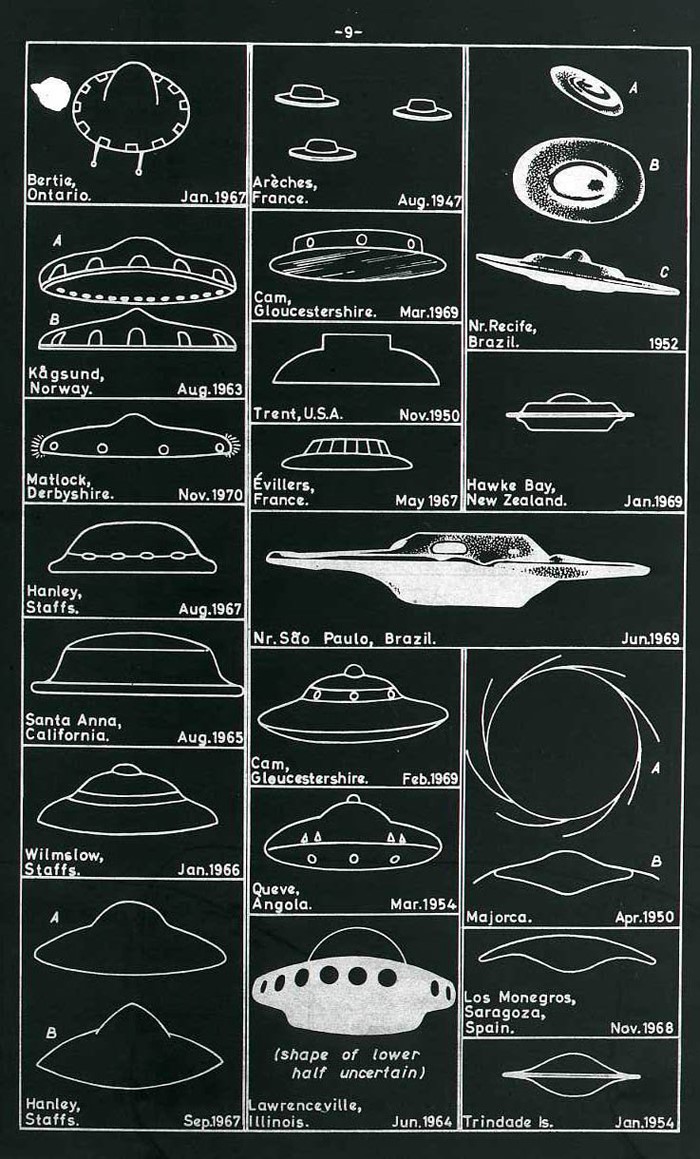
UFO Legacy: What Impact Will Revelation of Secret Government Program Have?
Believers in aliens visiting Earth's friendly skies via Unidentified Flying Objects (UFOs) couldn't ask for more: A secretive government group backed by federal "black money," a talkative former U.S. military intelligence official, fighter-jet video of odd objects doing out-of-this-world maneuvers and a space mogul purportedly housing leftovers of unidentified aerial craft.
It all has the feel of sliding open a top drawer in a new "X-Files" TV episode.
Yes, "the truth is out there," a maxim made all the stranger by reports last month by both The New York Times and Politico Magazine of the secretive Advanced Aviation Threat Identification Program, or AATIP for short. Along with the reporting, a video was released by the Department of Defense showing a 2004 encounter near San Diego involving two Navy F/A-18F fighter jets and an unknown object. [UFO Watch: 8 Times the Government Looked for Flying Saucers]
Behind the scenes
AATIP was originated by then-United States Senate Majority Leader Harry Reid (D-Nev.), who garnered taxpayer dollars to start the program in 2007, along with the support of the late senators Daniel Inouye (D-Hawaii) and Ted Stevens (R-Alaska).
But behind the scenes is Robert Bigelow of Bigelow Aerospace, a Harry Reid political donor in Nevada. A hefty chunk of the AATIP's $22 million budget over five years was reportedly given to Bigelow's company to hire subcontractors and carry out research for the program.
Now toss into the mix Luis Elizondo, the former intelligence officer who ran the AATIP, which initially was under the wing of the Defense Intelligence Agency. He resigned from the job last October, advising CNN post-departure that it was his personal belief "that there is very compelling evidence that we may not be alone."
Elizondo also told CNN that the craft studied by AATIP "are displaying characteristics that are not currently within the U.S. inventory nor in any foreign inventory that we are aware of." [7 Things Most Often Mistaken for UFOs]
Breaking space news, the latest updates on rocket launches, skywatching events and more!
Turning point
Jan Harzan, the executive director of the Mutual UFO Network (MUFON), sees the eye-opening reporting as a "turning point in the study of UFOs." He said his organization is excited about the events beginning to unfold "and feel[s] the public and everyone on this planet should be as well."
MUFON has been investigating and researching the UFO phenomenon since 1969, Harzan said. The group's analysis of over 100,000 UFO reports over the past five decades has shown three things to be true, he has stated:
1. UFOs are real
2. UFOs represent extremely advanced technology
3. Tremendous breakthroughs will happen if we make it safe for our scientists and engineers to study this phenomenon unimpeded. These breakthroughs involve the fields of propulsion, energy, communication, biology and consciousness, to name just a few.
The recently released fighter-jet camera video of craft off the coast of San Diego "is just the tip of the iceberg," Harzan said. "Our military vaults are full of such videos and data on these objects. Now that the spill gates have been opened a little, it is time for the rest to come out in an orderly fashion," he added, "and in so doing make it safe for our scientists and engineers to study this phenomenon without fear of ridicule or retribution, but with funding provided by Congress and private industry." [UFO Watch: 8 Times the Government Looked for Flying Saucers]
No national security threat
The new revelation about the AATIP is evidence that the U.S. government has been researching and taking this issue seriously for decades, despite claiming no interest in the phenomenon since 1969, said Alejandro Rojas, spokesman for the Scientific Coalition for Ufology (SCU).
Indeed, between 1952 and its termination in 1969, the U.S. Air Force's official UFO-investigation program, known as Project Blue Book, came to the following set of conclusions: No UFO reported, investigated and evaluated by the Air Force has ever given any indication of threat to our national security; there has been no evidence submitted to or discovered by the Air Force that sightings categorized as "unidentified" represent technological developments or principles beyond the range of present-day scientific knowledge; and there has been no evidence indicating that sightings categorized as "unidentified" are extraterrestrial vehicles.
Advanced technology
Rojas endorses the scientific study of the UFO phenomenon and believes that all information regarding unidentified aerial objects should be released so that the data can be properly analyzed by the scientific community.
"Remember, the 'U' is for unidentified, not alien," said Rojas, who is also director of operations for Open Minds Production.
"We don't know what these things are," Rojas told Space.com. "Just because we get uncomfortable with the idea of aliens does not mean we should not investigate when the people who pilot our most advanced technology say they encounter something that outclasses their aircraft. It would be highly negligent not to investigate."
Another striking point in the recent disclosure, Rojas added, is that the incidents "are very similar to events that have been recorded by the U.S. Air Force and other governments for decades."
Tone of evidence
There is one head-scratcher: Why release this information now? Some see it as a trial balloon to take the pulse of citizens' reactions. Is the public being set up for the really big news about alien visitors?
"I can't say I know why things are coming out at this time," said Stanton Friedman, a retired nuclear physicist and a long-time investigator and lecturer on the UFO phenomenon.
"I appreciate the courage of those former officials who came forth," Friedman said. He criticized debunkers who advocate listening for alien signals "but ignore the tone of evidence of alien visitors."
Small program, little to show
Robert Sheaffer is a writer and one of the leading skeptical investigators of UFOs.
In his summary of recent events, Sheaffer notes that Robert Bigelow has been a strong believer in UFOs and alien visitors all his life. He was a campaign contributor to Sen. Reid and some of Reid's causes and persuaded Reid that the military budget ought to include funds for the study of UFOs.
The AATIP is a small program by Pentagon standards, Sheaffer said; it ultimately spent just $22 million over five years.
"Who knew it apparently only takes three senators to set up a secret Pentagon project?" Sheaffer said.
Funding for the AATIP activity was discontinued in 2012, Sheaffer said, "because it was not producing any results, just reams of paper, although the investigation is reported to still be continuing, but without funding, if that is possible."
"They have only released two very blurry infrared videos of objects that appear to be distant jets, without sufficient information to do a really good analysis of them," he added. "So, ultimately, all you have are a few UFO believers in and outside government who were able to get away with funneling a few million Pentagon dollars to themselves for UFO research, and have very little to show for it." [Ten Alien Encounters Debunked]
UFO artifacts
Sheaffer said that what is really interesting is the statement in The New York Times story that, under Bigelow's direction, the aerospace company "modified buildings in Las Vegas for the storage of metal alloys and other materials that Mr. Elizondo and program contractors said had been recovered from unidentified aerial phenomena."
If that's true, Bigelow supposedly has actual artifacts from UFOs, Sheaffer said, "and in fact has such a large quantity that he needs to modify his buildings to accommodate them? That is just utterly bizarre. We need an explanation of exactly what buildings were modified at federal expense, and what do they contain?" he said.
Purpose of the program
"Threat identification is obviously an important task," said Steven Aftergood of the Project on Government Secrecy at the Federation of American Scientists in Washington, D.C.
"But the fact that this program was initiated at the request of Senator Reid — not the Air Force — suggests that national security was not the paramount motivation here," Aftergood said. This impression, he said, is reinforced by the fact that a constituent of Sen. Reid (Robert Bigelow) received funding through the program.
"It is somewhat dismaying to see how quickly 'unidentified' aerial phenomena are publicly interpreted and portrayed as UFOs of possibly extraterrestrial origin," Aftergood concluded. His advice: "Collectively, we should all be becoming more intelligent and more perceptive, not more stupid and gullible."
Serious study
"It is complicated, and I am still trying to make sense of things," said Mark Rodeghier, president and scientific director of the J. Allen Hynek Center for UFO Studies in Chicago, Illinois.
The center was started by Hynek, who served as the astronomical consultant to Project Blue Book. Hynek himself was initially dubious of the whole UFO business, but after culling through hundreds of reports by witnesses, he became convinced UFOs were worthy of serious study.
In broad terms, the outing of the AATIP and its investigation of military UFO sightings "confirms something that has been believed for many years … that these sightings are still happening," Rodeghier said. "We just were not learning about them."
Blip in UFO history?
Rodeghier said he hopes the core of AATIP information that has been gathered can be released to the public and made available for scientific analysis.
"It would be extremely disappointing and frustrating if these reports are not released for scrutiny. We need high-quality data about UFOs to do better science," Rodeghier said.
"If those reports are never released, all of this is going to be blip in UFO history," he added. "But even if it's only a blip in history, it's still a darn interesting blip."
Leonard David is author of "Mars: Our Future on the Red Planet," published by National Geographic. The book is a companion to the National Geographic Channel series "Mars." A longtime writer for Space.com, David has been reporting on the space industry for more than five decades. Follow us @Spacedotcom, Facebook or Google+. Originally published on Space.com.
Join our Space Forums to keep talking space on the latest missions, night sky and more! And if you have a news tip, correction or comment, let us know at: community@space.com.

Leonard David is an award-winning space journalist who has been reporting on space activities for more than 50 years. Currently writing as Space.com's Space Insider Columnist among his other projects, Leonard has authored numerous books on space exploration, Mars missions and more, with his latest being "Moon Rush: The New Space Race" published in 2019 by National Geographic. He also wrote "Mars: Our Future on the Red Planet" released in 2016 by National Geographic. Leonard has served as a correspondent for SpaceNews, Scientific American and Aerospace America for the AIAA. He has received many awards, including the first Ordway Award for Sustained Excellence in Spaceflight History in 2015 at the AAS Wernher von Braun Memorial Symposium. You can find out Leonard's latest project at his website and on Twitter.


